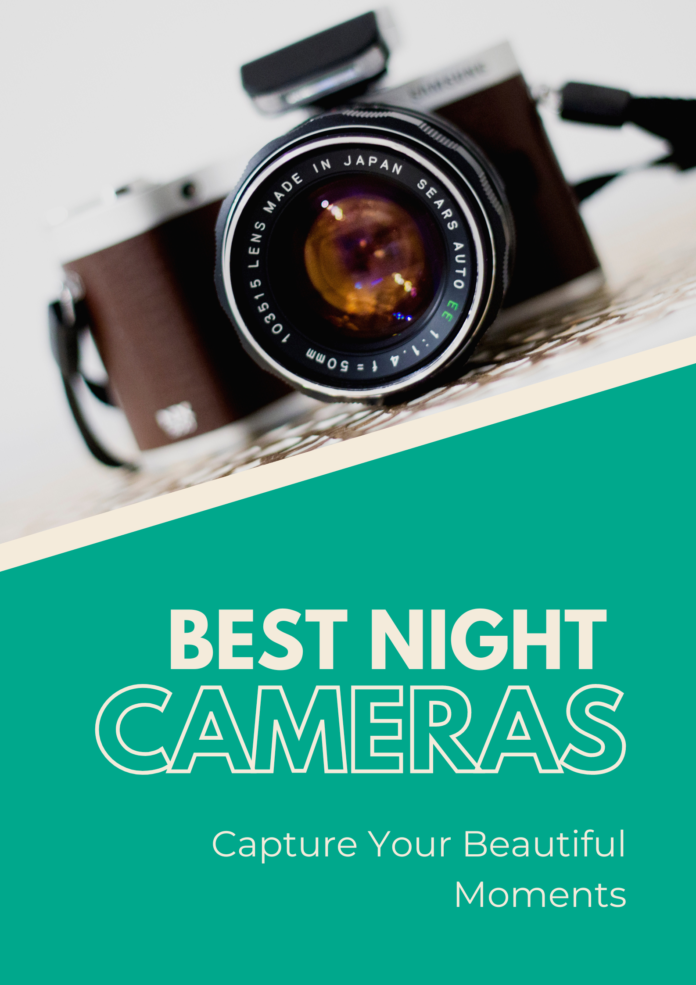Are You on a Quest to Capture Night Magic? Don’t Worry… We Can Help. Here, at Night Owl Photography, our aim is to assist with finding and using night cameras effectively as canvasses – without complex terms and jargon, but simply straightforward advice with a sprinkle of professional humor thrown in for good measure.
Why Night Photography?
Before diving deeper into night photography, let’s first discuss why night photography should interest us. The night is a canvas waiting to be filled with the soft glow of city lights, starlight, shadow play, and many other forms of beauty often hidden by daylight; with the appropriate camera, you can unlock its secrets.
The Search for the Best Night Cameras
Start exploring! Now is your opportunity to embark on the thrilling voyage of discovering the ideal night cameras, much like hunting fireflies in the dark – challenging yet fulfilling when we spot that mysterious glow.
What Makes a Camera Shine at Night
What should you look for in the best night camera? Here are the key factors:
- Low-Light Performance: As part of night photography, being able to adapt quickly in low-light conditions is crucial. Look for cameras with larger sensors as these will capture more light.
- Wide Aperture Lens: At night, having a lens with an aperture (such as f/1.4 or f/1.8 ) that lets in more light will help create the beautiful background blur that photographers love so much.
- Image Stabilization: Night shots often require longer exposure times, leading to blurry photos taken at night. Image stabilization can save the day here by keeping those shots steady.
- ISO Range: Night photography requires cameras with wide ISO ranges to provide photographers with more options in terms of light sensitivity adjustment – making these versatile cameras great for nighttime scenarios.
- Long Exposure Capabilities: Night photography often involves long exposures to capture light trails, starry skies, and dreamy water reflections. Look for cameras that can handle extended exposure times.
Types of Best Night Cameras
Now, let’s shed some light on the types of best night cameras that excel in night photography:
- DSLRs: DSLR cameras are known for their interchangeable lenses and superior low-light performance – like Swiss Army knives for night photography.
- Mirrorless Cameras: Mirrorless cameras are lightweight and compact cameras ideal for taking night photos without bulk. Many offer excellent low-light capabilities with its incredible low-light performance capabilities.
- Compact Point-and-Shoots: Don’t underestimate these compact cameras – some were specifically created with night photography in mind and can produce impressive results! Don’t underrate their capabilities. Some compacts were specifically created with night photography in mind and can produce impressive photos.
Using Your Night Camera Like a Pro
Now that you own an best night camera, let’s focus on using it like an expert. Night photography demands patience and imagination plus some “magic.”.
- Tripod Magic: Purchase a reliable tripod. Your tripod is an essential asset when taking long exposure images to ensure they remain steady on screen.
- Master Manual Mode: Take full control over manual mode with confidence. Handle ISO, aperture, and shutter speed settings in order to craft an ideal exposure.
- Use a Remote Shutter Release: Use either a remote shutter release or your camera’s built-in timer for long exposures in order to minimize camera shake.
- White Balance Wizardry: Play around with white balance settings to achieve different moods in your night shots. Tungsten for warm city lights, or daylight for a cool moonlit feel.
- Experiment with Light Painting: Use your flashlight or LED and be imaginative! Light painting adds an incredible effect to night photographs.
- Don’t Fear High ISO: Sometimes you must increase the ISO to capture an appropriate scene. Don’t fear grain; it adds character and can add dimension to night shots.
Editing Nighttime Masterpieces
Once your nighttime masterpieces have been captured, it’s important to add one final step: polish:
- Noise Reduction: Take your photos to a whole new level using noise reduction software tools to filter out unwanted grain in photos.
- Adjust Exposure: Adjust exposure settings post-processing in the post to make those stars sparkle and city lights come to life.
- Enhance Colors: Color enhancement will bring life and vibrancy into night photos, adding depth.
Conclusion
Finding and mastering night photography can be a rewarding endeavor, so when selecting your best night camera make sure it prioritizes low light performance, wide aperture lenses, image stabilization features, flexible ISO range capabilities, and long exposure capabilities.
And when shooting under moonlight with a tripod in hand, remember to embrace manual mode, use remote shutter release, and explore white balance and high ISO settings; your night camera is your gateway into capturing its magic!
Are You an Unsung Nocturnal Photographer? Welcome, My Nocturnal Photographer, and let the night become your canvas! While others sleep, you are awake creating art beneath stars and city lights – Enjoy Your Shoots!







